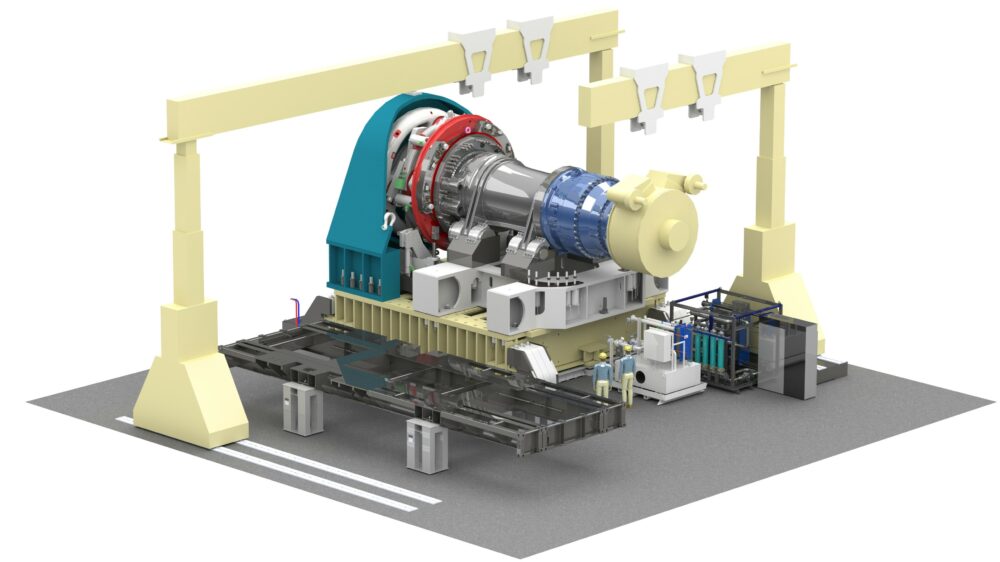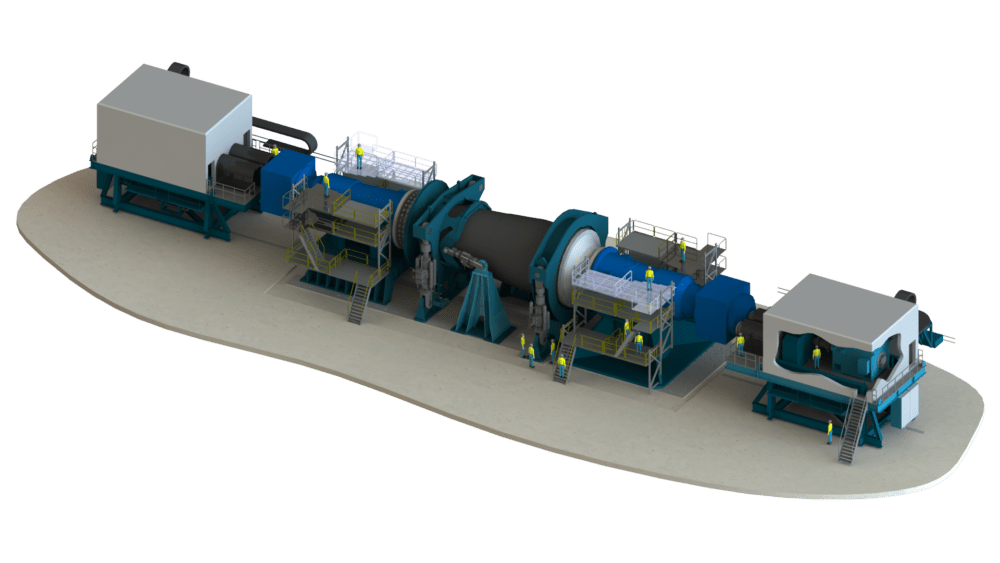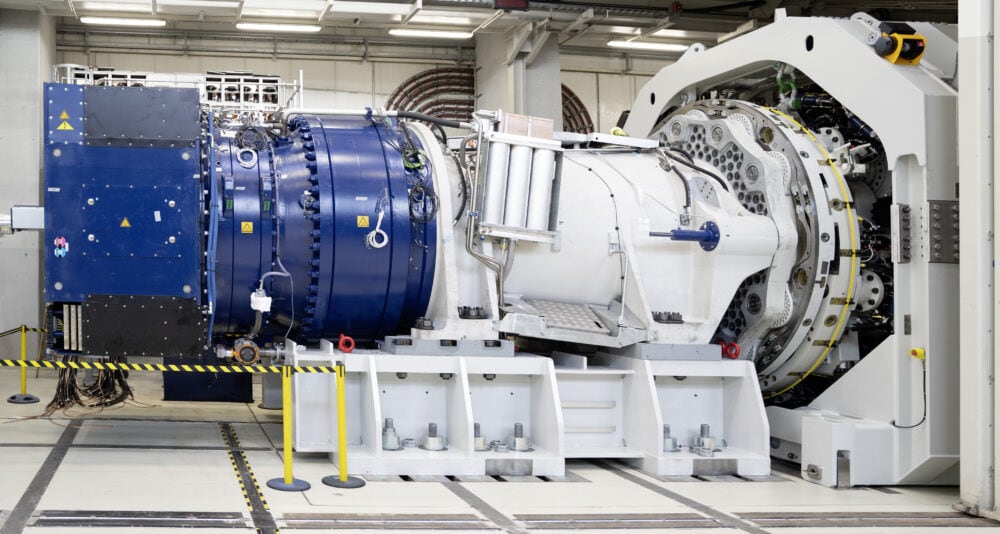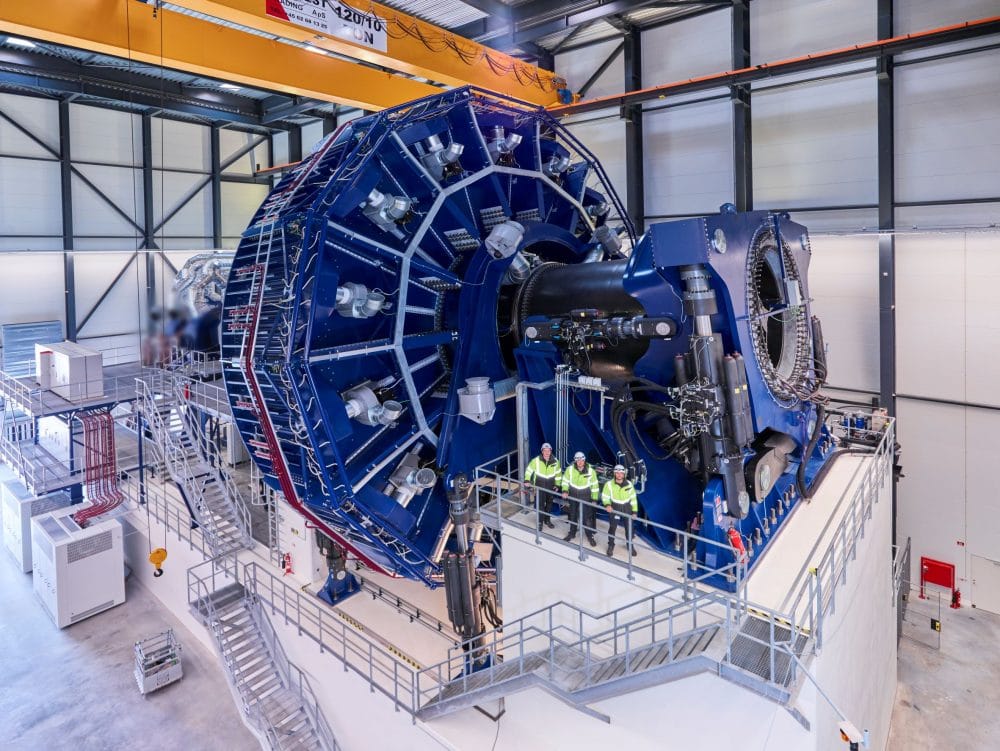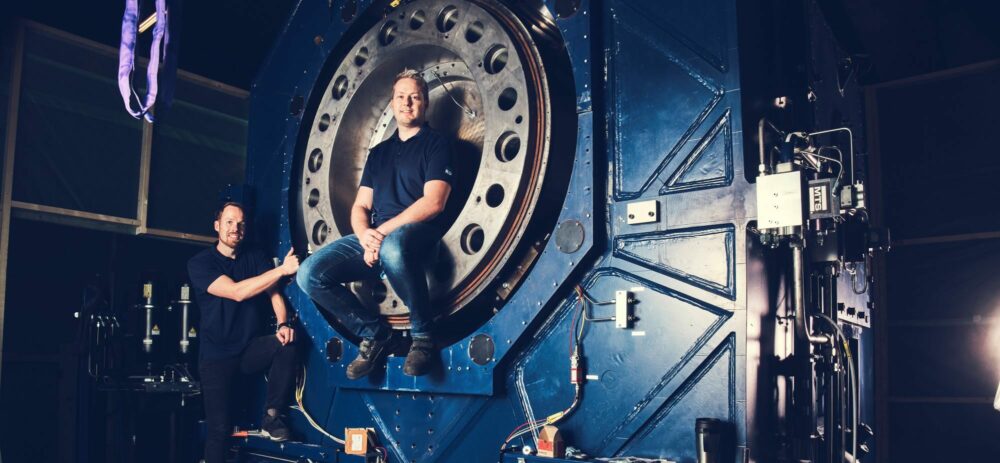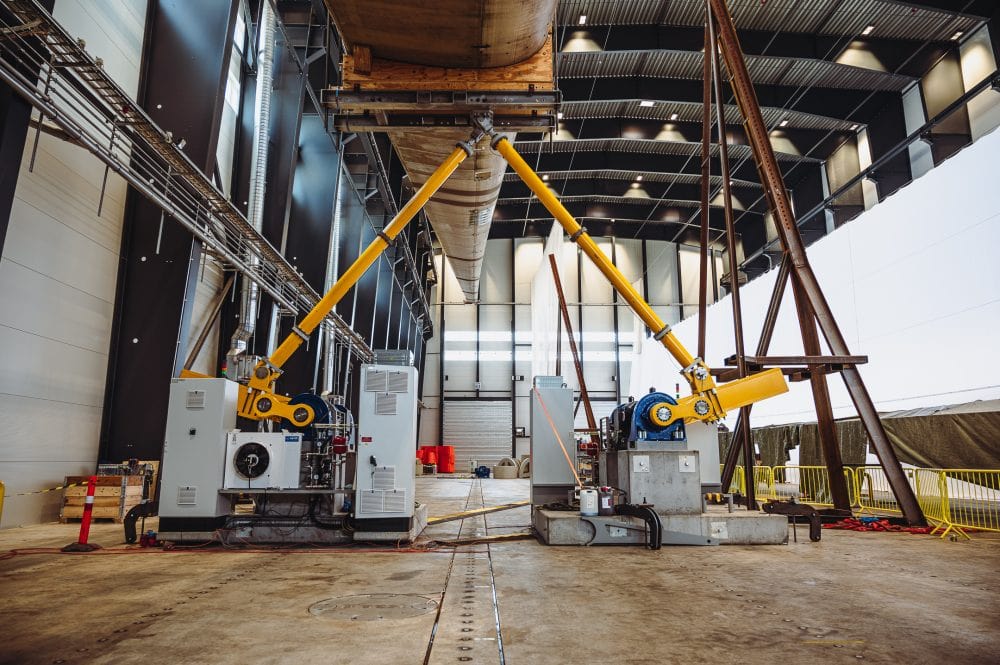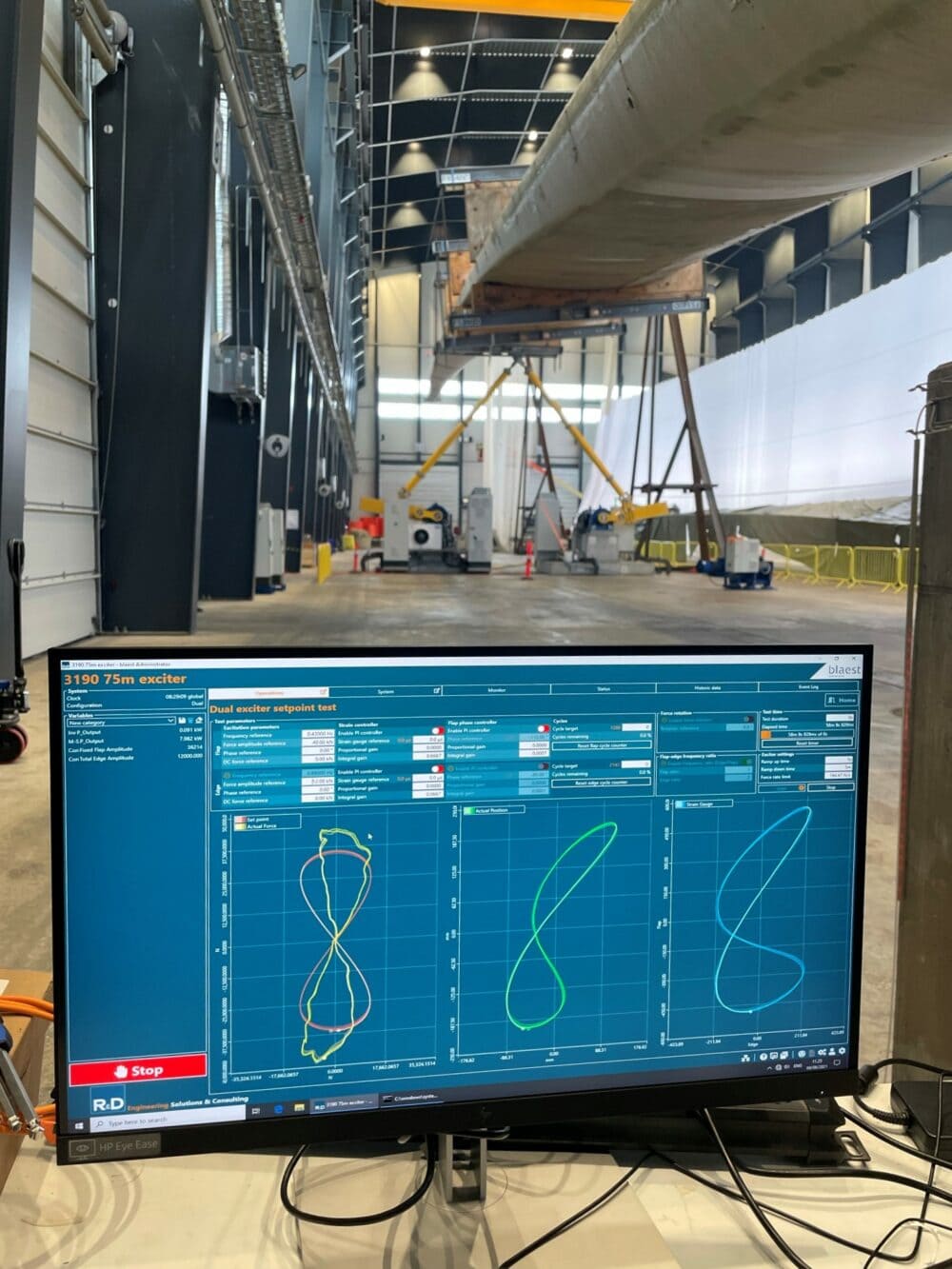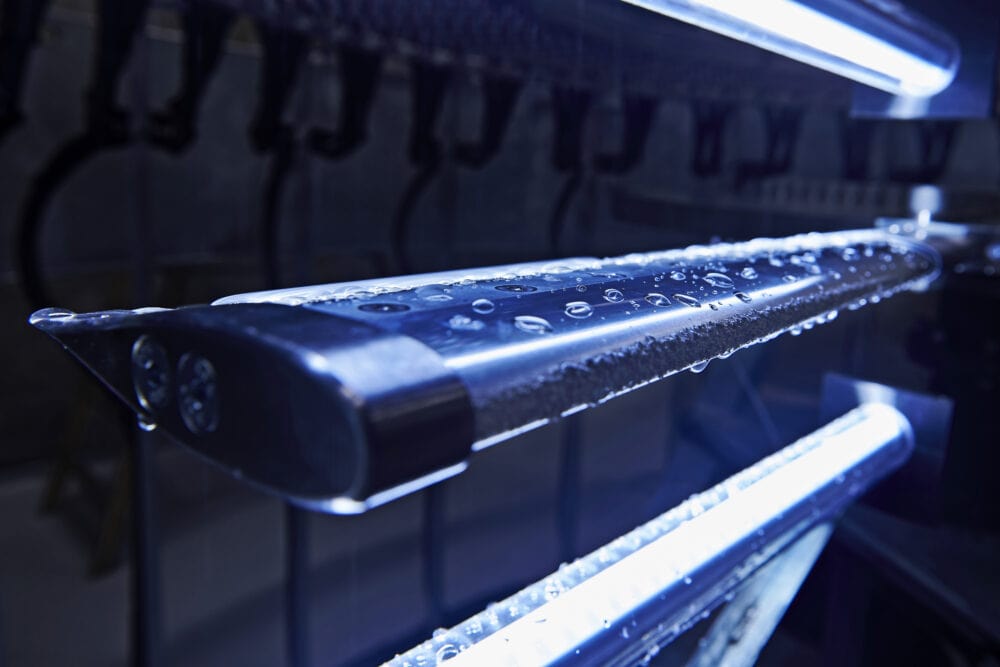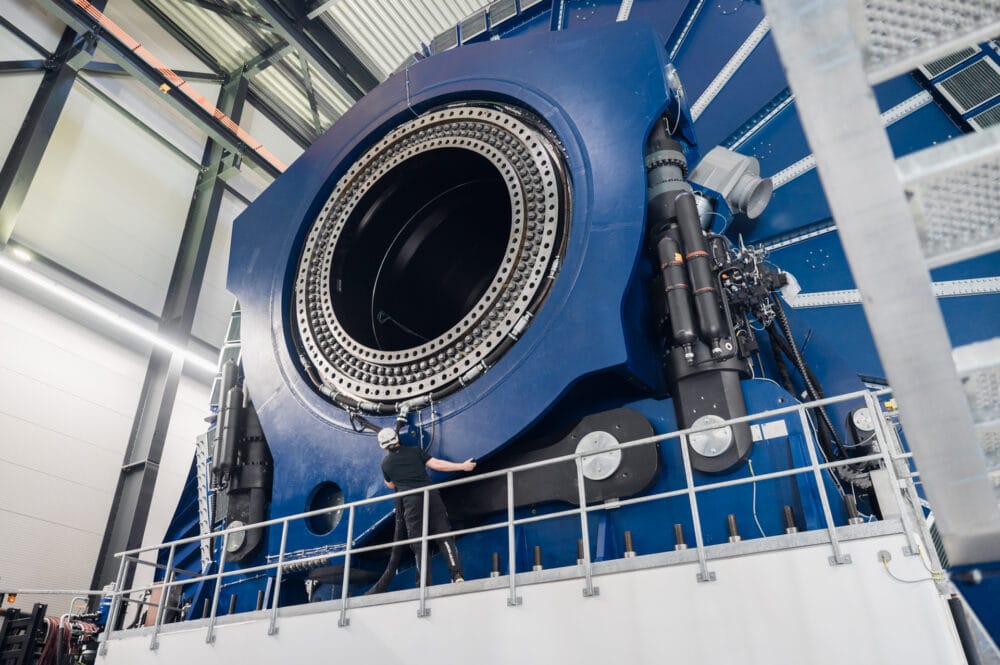
Digital Solutions
Digital twins will reduce testing time of wind turbines by 20%
Digital twins will reduce testing time of wind turbines by 20%
For wind turbine manufacturers and their sub-suppliers, testing is essential to ensuring the quality of both the design and manufacturing are of a high standard. Testing the components requires deploying complex and expensive experimental facilities, which are used by multiple OEMs and sub-suppliers.
R&D Test Systems is a world leader in developing structural testing technology and has designed and delivered the world’s largest test bench for wind turbines, the HALT XL, for Lindø Offshore Renewables Center (LORC). Full-scale testing of wind turbines is still possible. However, due to the increasing size of the wind turbines and their sub-components, the testing takes more time, creating an expensive and longer time-to-market for new and more efficient products.
To overcome this challenge, a newly founded research project named “DIGIT-BENCH” (DIGItal Twin for large-scale test BENCHes for the wind industry) aims to develop a framework for the digitalization of large-scale test benches. The project is funded by the Energy Technology Development and Demonstration Program (EUDP), a Danish public support program that grants aid to the development and demonstration of new energy technologies.
Optimized usage of test bench with digital twin
It is of imperative importance for wind OEMs to implement digitalization to support the future development of turbines and components, to achieve faster time to market, and reduce development costs. Therefore, as the market leader within full-scale nacelle and component turn-key test benches, it is natural for R&D Test Systems to help the industry implement digitalization and use the digital twin technology to stay first movers in the test bench contractor market.
The framework of the project is based on the digital twin paradigm meaning that the framework lives upon a digital replica of both the test bench and the device under test (DUT). By creating a digital twin of the test bench, it will be possible to predict processes related to a test campaign and reduce the test bench's expensive and unused time. The goal is to enable the test bench operator to perform test rehearsal virtually, replace some physical experiments with virtual experiments, and improve operation and maintenance.
“Today, when you run a test campaign, there’s a lot of manual workflows. We can help make these parts more efficient and save time by digitalizing them. E.g., with virtual testing, it will be possible to predict how the DUT will be placed on the test equipment, saving weeks or months. Whenever the test bench is not in use, it’s costly for both the OEM and the test center such as LORC,” explains Elif Ecem Bas, Ph.D., and Digital Tech Lead at R&D Test Systems.
“We are not at a point where we can skip the physical test bench, but we are at a point where we can use digital twins to optimize and better utilize the test bench,” continues Elif Ecem Bas.
The project will also enable hybrid testing, where downscaled technology or stand-alone components are tested while the remaining components are digitally coupled into the systems. This will address the industry's rising challenges of handling larger components.
“To use a digital twin for optimization is not something new within, e.g., manufacturing, but it is not seen before in the scale that our test systems require. We work with very large and complex systems with record-breaking loads and torque,” explains Elif Ecem Bas

Test benches already equipped for digitalization
The project needs to use sensors installed on the test bench and digital simulation models to create the digital twin. The sensors are already implemented on the test benches developed by R&D Test Systems, and many of the digital models are also ready, but they need to develop the backbone system to create the coupling, which is the entire essence of the EUDP project.
“We have already developed many of the models, so with the digital twin, we can start using these models on the test benches and close the gap between testing and simulation,” explains Elif Ecem Bas.
Reducing testing time by 20%
The DIGIT-BENCH solution aims to improve the time-to-market of larger, more reliable wind turbines by reducing the testing time by 20% using digital twin technology. It is estimated that such an improvement will propagate to an increase of ~15% of power generation capacity (~345 GW) installed between today and 2030 compared to the NetZero[1] baseline.
“I’m very excited that we got the funding because we can now realize the optimization and digitalization that we know is possible. We [R&D Test Systems] are the right partner to provide this solution to the industry because we already know our test benches. Together with the partners from AU, we will achieve this goal.,” concludes Elif Ecem Bas.
DIGIT-BENCH framework will be jointly developed by R&D Test Systems A/S, the Department of Civil and Architectural Engineering, and the Department of Electrical and Computer Engineering of Aarhus University and demonstrated on the HALT test bench of LORC. Vestas will be a part of the project advisory board.
The project had a kickoff in March 2023 and will run for the next three years.
[1] Net Zero by 2050 - A Roadmap for the Global Energy Sector, IEA, (October 2021).
How can we help you?



